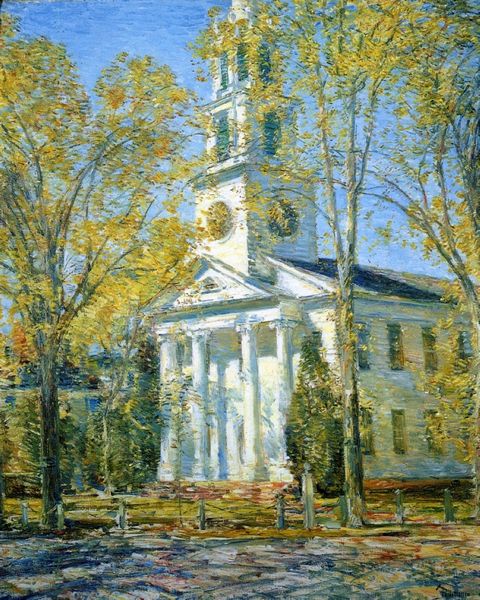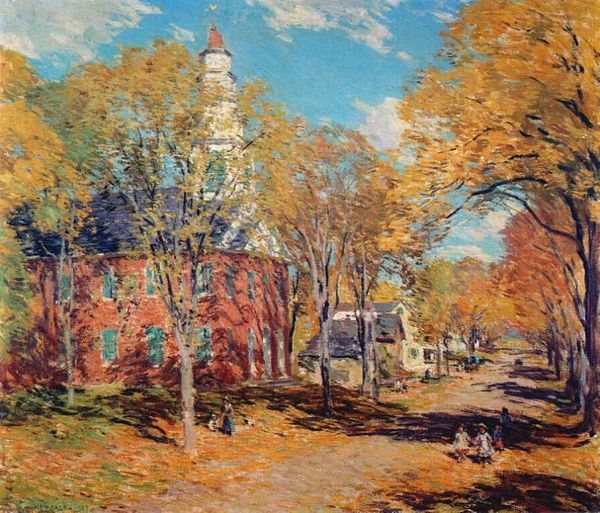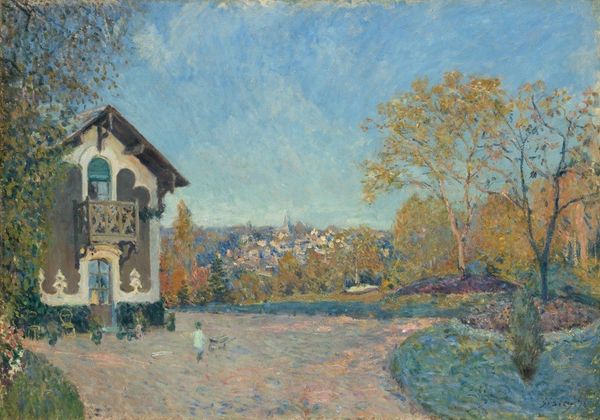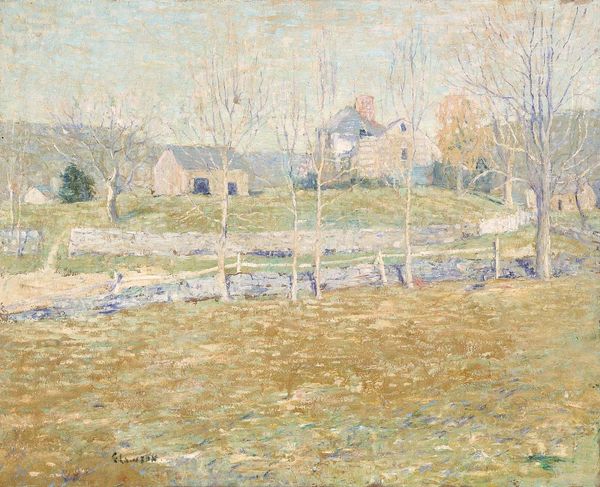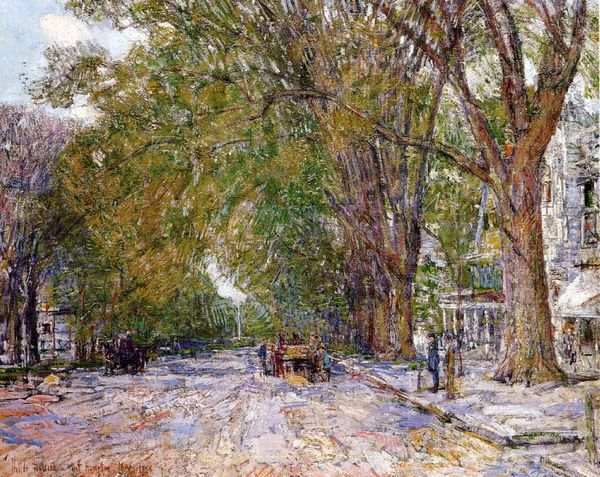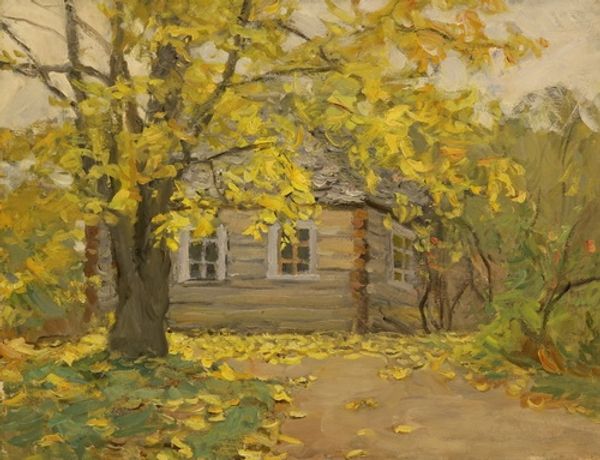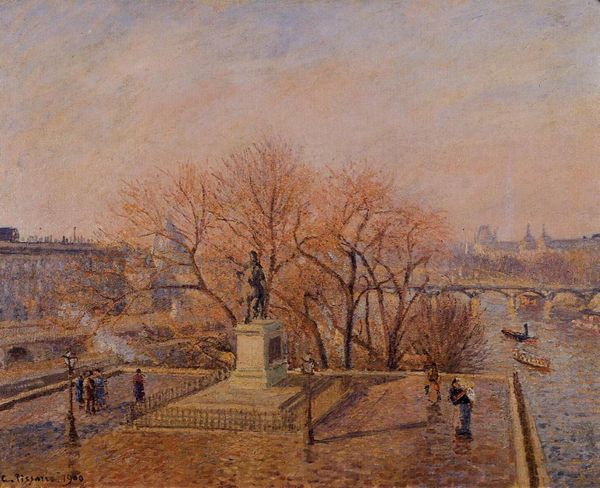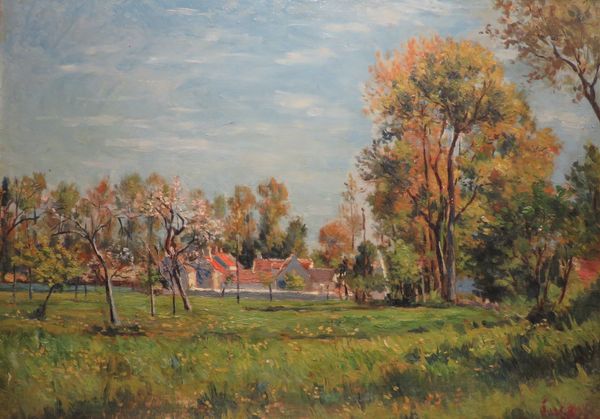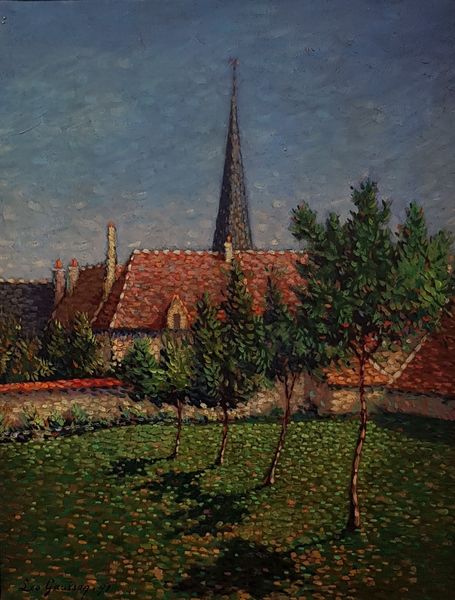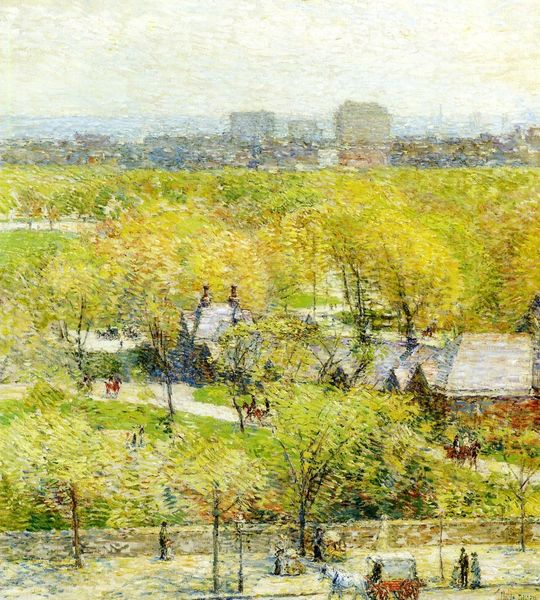
Copyright: Public domain
Editor: Here we have Childe Hassam's "Church at Old Lyme," painted in 1903. The autumnal colours and the way the church is framed by the bare trees gives it a real sense of place. What's your take on this work? Curator: I’m struck by how Hassam depicts the social fabric through the materials and processes involved in representing this scene. Oil paint itself, manufactured and distributed, speaks to the burgeoning industrialization of art production at the turn of the century. What materials do you think define its production most vividly? Editor: I would say paint! But also, canvas? Curator: Precisely. Consider the canvas itself – the cultivation of flax, the weaving process, the sizing. Each step involves labor and resources. Hassam isn't just depicting a church; he's presenting a finished commodity that obscures a whole chain of material relations, masking how it's made, and by whom. What statement might this artwork make about the value of work versus representation? Editor: Hmm, I suppose it raises questions about the value we place on the final product, the beautiful painting, versus all the work that went into producing the materials that allowed for the creation of such painting. The industry propping the artwork? Curator: Exactly. And notice the visible brushstrokes, the layering of paint. Is Hassam acknowledging, and in a way celebrating the materiality, or still attempting to mask the reality? Editor: So it’s both? It's beautiful, yet challenges our perspective? Thank you, that gives me a lot to think about regarding the physical creation process that has always been in front of us.
Comments
No comments
Be the first to comment and join the conversation on the ultimate creative platform.
